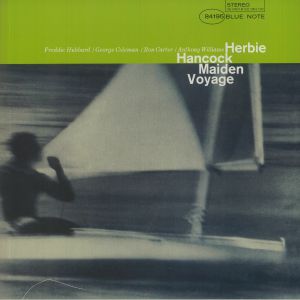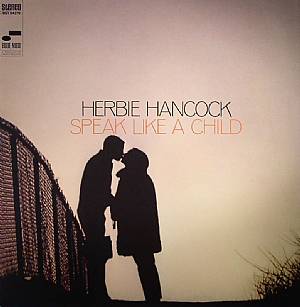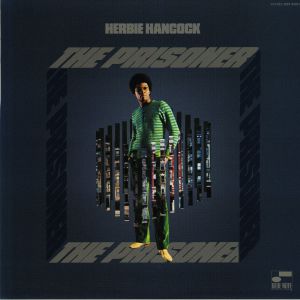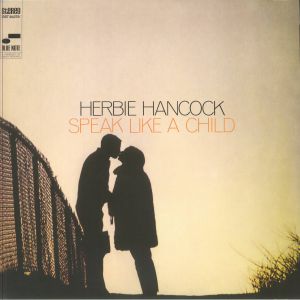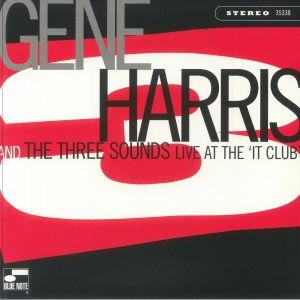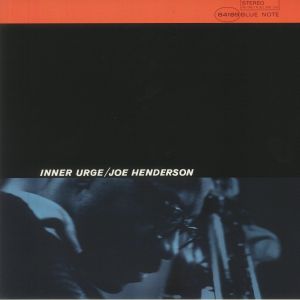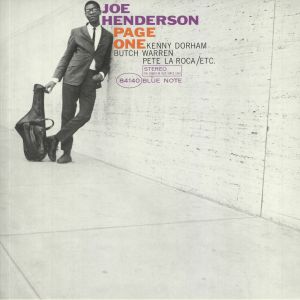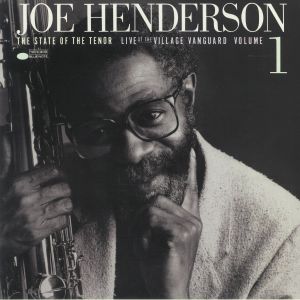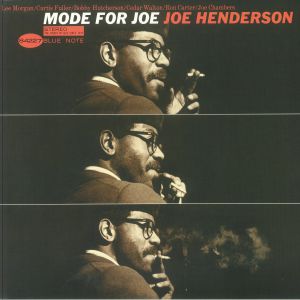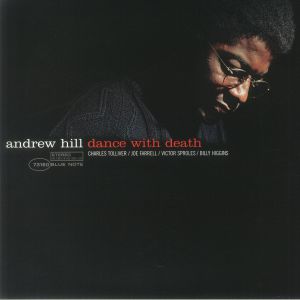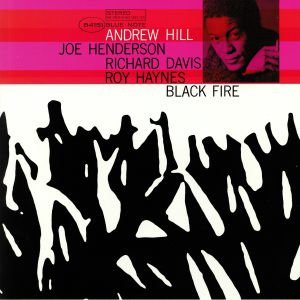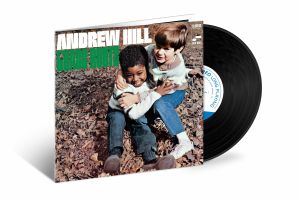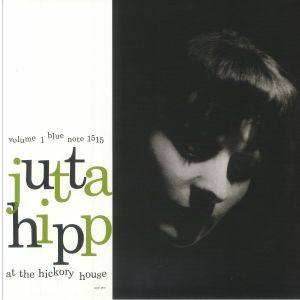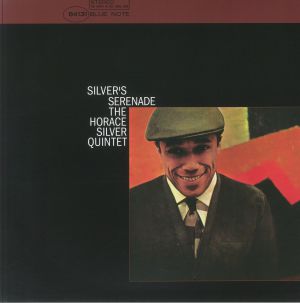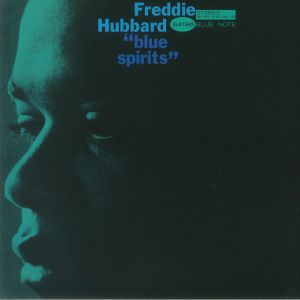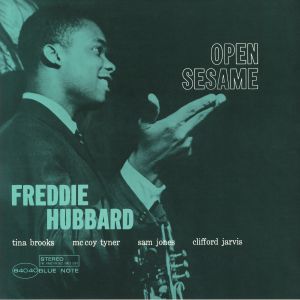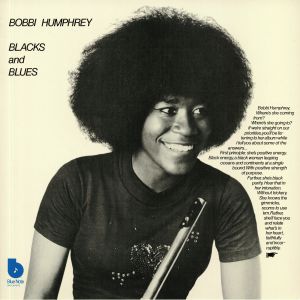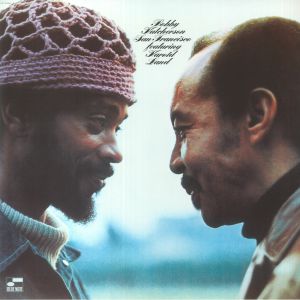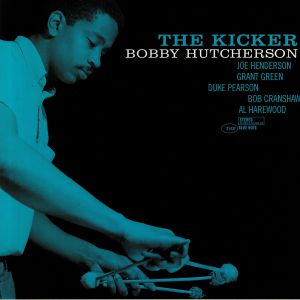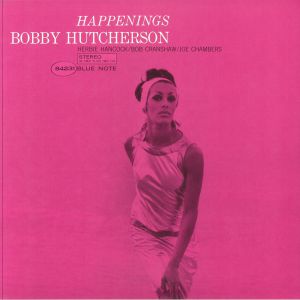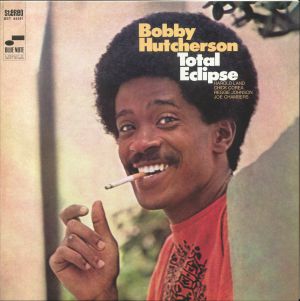Filter
在庫状況
Type
音楽
フォーマット
アーティスト
レーベル
Featured
リリースタイトル
値段
Back catalogue: All genres
Juno's full catalogue of All genres
アルバム
Maiden Voyage (Classic Vinyl Series) (limited 180 gram audiophile vinyl LP)
Cat: 359319 6. Rel: 24 Sep 21
Jazz
Review: Blue Note's Classic Vinyl series is about reissuing vital jazz records on heavyweight vinyl with all new mastering by Kevin Gray of Coherant Audio. Next to get the special treatment it deserves is Herbie Hancock's 1965 classic Maiden Voyage, which is some of the most evocative jazz to have ever been recorded. Net to Hancock, the players were all either present or past members of Miles Davis' quintet, so made for a heavy line-up. Hancock's impressionistic style is here for all to hear with the sublime compositions of 'Dolphin's Dance' and 'Maiden Voyage' and more tumultuous sounds of 'The Eye Of The Hurricane' some of the highlights.
… Read morePlayed by: Juno Recommends Jazz, DJ ROCCA
in stock $26.28
My Point Of View (Tone Poet Series) (reissue) (gatefold 180 gram audiophile vinyl LP)
Cat: 881133. Rel: 30 Oct 20
Jazz
Played by: Juno Recommends Jazz
in stock $44.81
in stock $32.08
Played by: Juno Recommends Jazz
in stock $33.18
Speak Like A Child (Classic Vinyl Series) (gatefold 180 gram audiophile vinyl LP)
Cat: 583203 2. Rel: 18 Apr 24
Jazz
Review: Speak Like A Child by Herbie Hancock is a groundbreaking album that defies categorization, blending elements of post-bop, modal jazz, and funk into a cohesive and forward-thinking sound only to be slotted into a wide spanning genre like Jazz-Fusion. The title track, 'Speak Like A Child', is a standout composition that highlights Hancock's signature piano playing, characterized by its lyrical melodies and inventive harmonies. The album features intricate arrangements and complex rhythms, with each track offering a unique sonic journey for the listener. Hancock's ability to push the boundaries of traditional jazz while maintaining a deep respect for the genre's roots is clear throughout the album. 'Speak Like A Child' remains a landmark recording in Hancock's discography, cementing his status as one of the most influential figures in modern jazz.
… Read morePlayed by: Juno Recommends Jazz
in stock $29.32
Review: The Three Sounds, one of Blue Note's most productive acts, evolved significantly by 1970. Under the leadership of pianist Gene Harris, the trio welcomed bassist Henry Franklin and drummer Carl Burnett into its ranks, infusing their blues and gospel foundations with a funkier, more vibrant rhythm. This shift is brilliantly captured in Live at the 'It Club', a rousing live recording that highlights their transformation. The record demonstrates how the trio, especially through Burnett's drumming and Franklin's basslines, pushed their sound into funkier territories while maintaining their soulful hard-bop roots. The rhythm section's infectious groove drives the music, giving it a loose, swinging feel where the groove is paramount. Tracks like 'Funky Pullett' and 'Love for Sale' showcase this new dynamic, where the interplay between the trio adds layers of grit and soul to their performances. Live at the 'It Club' remains a thoroughly enjoyable listen with the trio's unique blend of soul-jazz with a fresh, funky twist proudly presented.
… Read morePlayed by: Juno Recommends Jazz
in stock $30.15
Played by: Juno Recommends Jazz, DJ ROCCA
in stock $29.32
Played by: Juno Recommends Jazz
in stock $28.22
The State Of The Tenor: Live At The Village Vanguard Volume 1 (Tone Poet Series) (180 gram audiophile vinyl LP)
Cat: 860056. Rel: 28 Aug 20
Jazz
Played by: Mukatsuku Records Chart, Juno Recommends Jazz
in stock $42.33
Review: Released in 1966, Joe Henderson's Mode For Joe is a captivating jazz work that showcases his unparalleled skill and artistry as a saxophonist and composer. It came at a time when Henderson was at the peak of his creative powers and leading a stellar ensemble that included Lee Morgan, Curtis Fuller, and Bobby Hutcherson. From the infectious groove of 'A Shade of Jade' to the haunting beauty of 'Black,' each track offers a mesmerising blend of intricate melodies and vibrant improvisation. Henderson's rich tone and expressive phrasing command attention throughout and it is that which makes Mode For Joe such a well-regarded work that still holds great value today.
… Read morePlayed by: Juno Recommends Jazz
in stock $30.98
Dance With Death (Tone Poet Series) (gatefold 180 gram audiophile vinyl LP)
Cat: BST 73160. Rel: 02 Mar 23
Jazz
Review: Andrew Hill's debut album first came to the jazz giant Blue Note Records in 1963, but it wasn't until almost two decades later in 1980 when the titanic 'Dance With Death' laid down the pianist's existential side. A six-track meander through melodic post-bop, high-note ivory-tinkings, and an unmistakable focus on swing as its rhythmic base, this is almost certainly an unforgettable brush with the other side. Hill's piano is muted yet stark, providing a neatly blue counterpoint to the stereoized and doubled-up trumpet parts played by Charles Tolliver and Joe Farrell.
… Read morePlayed by: Juno Recommends Jazz
in stock $33.18
Black Fire (Tone Poet Series) (reissue) (gatefold 180 gram audiophile vinyl LP)
Cat: 775202 1. Rel: 26 Jul 19
Jazz
Played by: Mukatsuku Records Chart, Juno Recommends Jazz
in stock $33.75
Grass Roots (reissue) (Tone Poet Series) (gatefold 180 gram vinyl LP)
Cat: 551876 9. Rel: 17 Jan 25
Jazz
Review: Andrew Hill's 1968 release merges intricate rhythms with dense, harmonically rich compositions that push the boundaries of jazz. The ensemble, featuring Lee Morgan and Booker Ervin, dives into challenging material that unfolds with every listen. The intricate brass work on tracks like 'Grass Roots' contrasts with the fluidity of Hill's piano, while the rhythm section locks into an effortlessly tight groove. Hill's compositions are complex yet absorbing, blending intellectual depth with emotional resonance, creating a unique sonic landscape that rewards careful listening.
… Read morePlayed by: Kaoru Inoue
in stock $41.21
At The Hickory House Vol 1 (remastered) (180 gram audiophile vinyl LP)
Cat: 588078 9. Rel: 19 Sep 24
Jazz
Take Me In Your Arms
Dear Old Stockholm
Billie's Bounce
I'll Remember April
Lady Bird
Mad About The Boy
Ain't Misbehavin'
These Foolish Things
Jeepers Creepers
The Moon Was Yellow
Review: Jutta Hipp's At The Hickory House Vol. 1 is a window into a world where jazz piano can swing without fanfare and charm without overstatement. Recorded live in 1956, it captures a moment in time where Hipp, a little-known German transplant to New York, performed with bassist Peter Ind and drummer Ed Thigpen in a tight, energetic trio format. Hipp's lightly-swinging style moves effortlessly through bebop themes and standards, showing a deftness that feels unforced and natural, with just the right amount of flair. This Blue Note Classic Vinyl Edition is about the purity of soundimono, all-analogue, and mastered from the original tapes by Kevin Gray. The 180g pressing at Optimal guarantees that every note rings out with clarity, allowing listeners to experience Hipp's playing as it was meant to be heard. It's as close to stepping into that intimate club setting as you'll get without a time machine. There's a reason this release still resonates: the understated brilliance of a pianist who never quite got the limelight she deserved, but certainly made a lasting impression on those who tuned in.
… Read morePlayed by: Juno Recommends Jazz
in stock $30.15
Review: Blue Note first delivered Horace Silver's Silver Serenade in 1964, adding yet once more to their precious collection of sonorous soul jazz metals. With Blue Mitchell on trumpet, Junior Cook on tenor saxophone, Gene Taylor on bass, and Roy Brooks on drums, the natural scarcity of this serenade is a cultivated one, not spooned; Silver's naturalistic trumpet sounds carpal and easy, dancing brightly against clear, impeccably recorded contrapuntal movements by Brooks and Taylor.
… Read morePlayed by: Juno Recommends Jazz
in stock $38.72
Blue Spirits (Tone Poet Series) (gatefold 180 gram audiophile vinyl LP)
Cat: 385683 8. Rel: 04 May 23
Jazz
Review: Blue Note's Tone Poet series is about reissuing some of the most notable label in its back catalogue on high-quality vinyl with all new mastering jobs. Next up is Freddie Hubbard's Blue Spirits, which was his label debut back in 1950 and saw the prodigious trumpeter kick off what was an astonishing run of records. He was joined by a wealth of talents such as James Spaulding on alto saxophone and flute, Joe Henderson on tenor, Kiane Zawadi on euphonium and Clifford Jarvis on drums, and Big Black on congas. Between them, they provide a rich textured album full of dynamic horns and evocative originals.
… Read morePlayed by: Juno Recommends Jazz
in stock $37.07
Open Sesame (reissue) (heavyweight vinyl LP)
Cat: 774506 6. Rel: 14 Jun 19
Broken Beat/Nu Jazz/Nu Soul
Played by: Juno Recommends Broken Beat Nu Jazz
in stock $29.05
in stock $29.05
San Francisco (Classic Vinyl Series) (180 gram audiophile vinyl LP)
Cat: 485954 8. Rel: 19 Jan 23
Jazz
Review: Here's another classic from one of the greatest vibraphone players to ever grace the world of jazz. Amongst Bobby Hutcherson's imperious discography lies this collaboration with tenor sax, flute and oboe virtuoso Harold Land, originally released on Blue Note in 1971. San Francisco is notable for the shift Hutcherson and Land took away from the common hard bop style they were best known for, heading towards the fruitful pastures of jazz fusion. As well as the lead men, special credit goes to the rhythm section of John Williams on bass and Mickey Roker on drums, holding down some sturdy grooves for the duration.
… Read morePlayed by: Juno Recommends Jazz, DJ ROCCA
in stock $29.05
The Kicker (Tone Poet Series) (reissue) (gatefold 180 gram audiophile vinyl LP)
Cat: 865925. Rel: 11 Sep 20
Jazz
Played by: Juno Recommends Jazz
in stock $46.75
Review: Bobby Hutcherson's iconic Happenings is a mesmerizing jazz opus that even now all these years later still brims with innovation and emotion. Released originally in 1966, the record showcases Hutcherson's mastery of the vibraphone and how he effortlessly weaves intricate melodies with a vibrant rhythmic pulse. Backed by a stellar ensemble including the one and only Herbie Hancock, Hutcherson crafts a sonic landscape that is both sophisticated and accessible. Tracks never fail to captivate with their dynamic interplay and infectious grooves, while reflective pieces are also included to offer moments of introspection. Happenings then is a standout from an unparalleled talent.
… Read morePlayed by: Juno Recommends Jazz
in stock $30.98
Total Eclipse (Tone Poet Series) (gatefold 180 gram audiophile vinyl LP)
Cat: 459532 1. Rel: 02 May 24
Jazz
Review: Bobby Hutcherson's Total Eclipse is a seminal work in the post-bop jazz genre. Released in 1968, the album showcases Hutcherson's masterful vibraphone playing and his innovative approach to composition which creates a sense of mystery and wonder. 'Herzog' is a up-tempo number, with Hutcherson's vibraphone taking a more prominent role. The track features some blistering solos from Hutcherson and his fellow musicians, including pianist Herbie Hancock and bassist Ron Carter. 'Matrix' is a complex and challenging piece that showcases Hutcherson's experimental side. The track features a variety of odd time signatures and dissonant harmonies, but Hutcherson's playing is always melodic and accessible. 'Same Shame' is a more traditional jazz ballad, with Hutcherson's vibraphone playing taking a more subdued role. The track is a showcase for Hutcherson's lyrical and sensitive playing. The album closes with 'Pompeian,' a haunting and atmospheric piece that recalls the title track. Total Eclipse is a masterpiece of post-bop jazz.
… Read morePlayed by: Juno Recommends Jazz
in stock $43.71

 USD
USD






